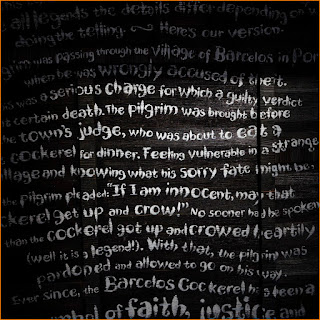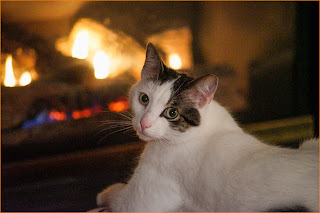November 30th.
Ideas, Comments, Exaggerations & Delusions, Inspirations, and Secrets. Shoot what it feels like, not what it looks like. Seeing my world through Sony gear, finding Heaven everywhere. Check out my website/links below.
Monday, November 30, 2015
Sunday, November 29, 2015
Saturday, November 28, 2015
Sony Diaries #966: High ISO's
ISO5000
ISO12800
ISO25600
on the Sony a7II, Minolta 70-21F4, with an LA EA4 adaptor, AWB. Not bad at all for a lens that's probably over 35 years old, available on the used market for less than $100. And as for this Sony, nothing left to say that others haven't mentioned already: the best sensors and processing engine to match!
Sony Diaries #965: inexpensive fast legacy prime lenses
$80 Canon FD 50f1.4 @f1.4, ISO640, Sony a7II with a $30 Fotosy adaptor
$50 Konica AR 57f1.4 @f2, ISO1250, Sony a7II with a $30 Fotosy adaptor
$50 Konica AR 57f1.4 @f1.4, ISO1250, Sony a7II with a $30 Fotosy adaptor
Friday, November 27, 2015
new app in town
LIMELIGHT: a new photo-sharing app now available on Android from Google Play. iOS version on the way. Brought to you by Tomas Baena Limelyght on GooglePlay
Thursday, November 26, 2015
Wednesday, November 25, 2015
Tuesday, November 24, 2015
Sony Diaries #963: cell phone shots on a Tuesday night
The unaided eye would just see a white orb with a darker halo on a high humidity night with the temperature just over 0 Celsius. There was enough ambient city light scattered by the moisture in the air to make for a lit night in the park. Melted snow from the previous night's dusting stood out against the the dark brown grass. It wasn't a pitch-black night.
This shot illustrates the advanced sensor technology in today's cell-phones, as well as it's processing power (native + Instagram). Here you see the sensor grasping to capture whatever photon is in the sky. But it's not all technology; the photographer still has to pick one or two options from the hundreds available to showcase his/her vision.
The result is a painterly Van Gogh'ish benevolent moon over a small city setting, the lights indicating human existence. It's surreal that this is the same moon over Lebanon, and Syria, Iraq, and Nigeria.
Rhodie, the Rhodesian Ridgeback on the first landing up the stairs, lit by a solitary table lamp, waiting for us to get in bed, so he can take up his disproportionate space.
Monday, November 23, 2015
Sony Diaries #960: Costco Red
this should be the "Caution: Bulk-Buying Temptation Alert" sign.
Nice and shiny for the wide loads to come. November 23rd.
Sunday, November 22, 2015
Saturday, November 21, 2015
Friday, November 20, 2015
Pray For A World
It is not Paris we should pray for.
It is the world. It is a world in which Beirut,
reeling from bombings two days before Paris,
is not covered in the press.
A world in which a bomb goes off
at a funeral in Baghdad
and not one person's status update says "Baghdad",
because not one white person died in that fire.
Pray for the world
that blames a refugee crisis for a terrorist attack.
That does not pause to differentiate between the attacker
and the person running from the very same thing you are.
Pray for a world
where people walking across countries for months,
their only belongings upon their backs,
are told they have no place to go.
are told they have no place to go.
Say a prayer for Paris by all means, but pray more,
for the world that does not have a prayer
for those who no longer have a home to defend.
for a world that is falling apart in all corners,
and not simply in the towers and cafes we find so familiar.
- Candice Soave
Wednesday, November 18, 2015
Monday, November 16, 2015
Sunday, November 15, 2015
Saturday, November 14, 2015
Friday, November 13, 2015
Thursday, November 12, 2015
Wednesday, November 11, 2015
Monday, November 9, 2015
Sunday, November 8, 2015
Sony Diaries #944: split-rail fences and Wabi-sabi
Pared down to its barest essence, wabi-sabi is the Japanese art of finding beauty in imperfection and profundity in nature, of accepting natural cycle of growth, decay, and death. It's simple, slow, and uncluttered - and it reveres authenticity above all. Wabi-sabi is flea markets, not warehouse stores; aged wood, not Pergo; rice paper, not glass. It celebrates cracks and crevices and all the other marks of time, weather, and loving use leave behind. It reminds us that we are all transient beings on this planet - that our bodies as well as the natural world around us are in the process of returning to the dust from which we came. Through wabi-sabi, we learn to embrace liver spots, rust, frayed edges, and the march of time they represent.
Wabi-sabi is underplayed and modest, the kind of quiet, undeclared beauty that waits patiently to be discovered. It's a fragmentary glimpse: the branch representing the entire tree, shoji screens filtering the sun, the moon 90 percent obscured behind a ribbon of cloud. It's a richly mellow beauty that's striking but not obvious, that you can imagine having around you for a long, long time… it's the difference between 'pretty' and the 'interestingness that kicks something into the realm of beautiful'… it's the peace found in a moss garden, the musty smell of geraniums, the astringent taste of powdered green tea".
Wabi-sabi is underplayed and modest, the kind of quiet, undeclared beauty that waits patiently to be discovered. It's a fragmentary glimpse: the branch representing the entire tree, shoji screens filtering the sun, the moon 90 percent obscured behind a ribbon of cloud. It's a richly mellow beauty that's striking but not obvious, that you can imagine having around you for a long, long time… it's the difference between 'pretty' and the 'interestingness that kicks something into the realm of beautiful'… it's the peace found in a moss garden, the musty smell of geraniums, the astringent taste of powdered green tea".
- architect Tadao Ando
Subscribe to:
Posts (Atom)
POPULAR POSTS
-
Well, it's not really. The signage is changed on a regular basis by the owner of this establishment who fixes washers and dryers. T...
-
Kamal and Lamis' wedding on June 30th, in London, ON. This is the first wedding in years that I have attended as a guest. Througho...
-
a65 (a77 would be too big for this setup), HVLF43AM Flash (the 58AM would be too big for this setup), ThinkTank's CB Junior bracke...
-
I came across this blog by a collection of inveterate aficionados of broken umbrellas. They also welcome submissions from the umbrellarazzi...
-
It's been an intense relationship and it will soon be over. It's not the Oly, (here's goes the proverbial...) it's me. A mon...
-
http://bostonreview.net/BR36.3/junot_diaz_apocalypse_haiti_earthquake.php Pulitzer Prize winner Junot Diaz, in the May-June 2011 Boston Revi...
-
by Mary, of non-Filipina heritage, using a cookbook recipe for adobo . March 23rd. Recipe by www.pepper.ph . In addition to the recipe,...
-
There has never been a free lunch with high ISO's. Using high ISOs (ISO1600 and higher) meant putting up with noise/grain, colour shift...
























































